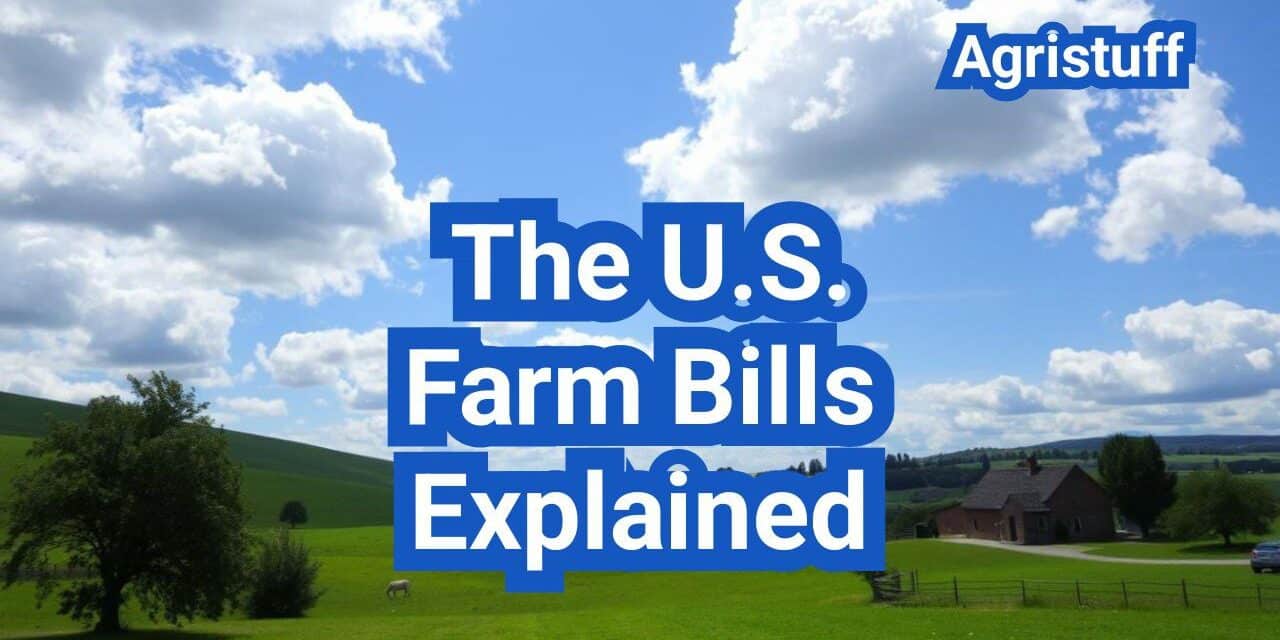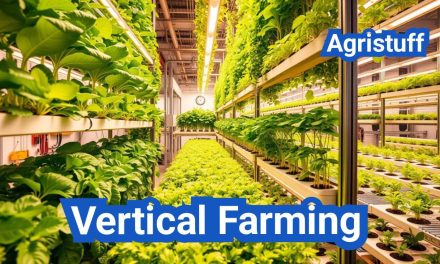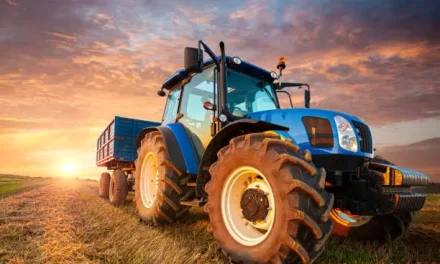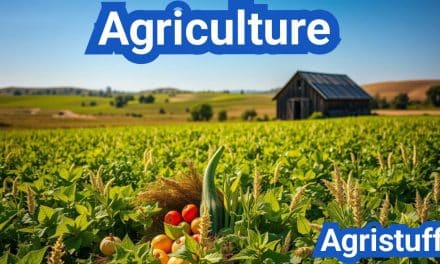The farm bill is a comprehensive legislation that affects not only farmers but also the broader community, including nutrition programs and conservation initiatives.
It holds significant statutory power and provides mandatory and discretionary funding for various everyday programs and functions. Understanding the components of the farm bill is crucial for farmers and the agricultural industry.
As the farm bill is reauthorized, farmers and stakeholders must stay informed about the changes and updates that could impact their operations and livelihoods.
Key Takeaways
- The farm bill is a comprehensive legislation affecting farmers and the broader community.
- Understanding the farm bill’s components is crucial for farmers and the agricultural industry.
- The farm bill provides funding for various programs, including nutrition and conservation initiatives.
- Staying informed about farm bill updates is essential for farmers and stakeholders.
- The farm bill has a significant impact on the agricultural industry and the economy.
What Are Farm Bills and Why They Matter
Understanding farm bills is essential for grasping the complexities of U.S. agricultural policy. Farm bills are comprehensive pieces of legislation that govern a wide range of agricultural and food programs.
Definition and Purpose of Farm Bills
Farm bills are multi-year laws that authorize the spending of billions of dollars on various agricultural programs, including commodity support, conservation, and nutrition programs. The primary purpose of farm bills is to provide a safety net for farmers, promote agricultural productivity, and ensure food security.
The farm bill encompasses several key titles, including:
- Commodity Programs: Providing support to farmers who grow specific crops.
- Conservation Programs: Promoting environmental stewardship and conservation practices.
- Nutrition Programs: Funding programs like SNAP (Supplemental Nutrition Assistance Program).
Historical Context and Evolution
The first farm bill was enacted in the 1930s as part of the New Deal programs aimed at addressing the agricultural crisis during the Great Depression. Since then, farm bills have evolved to address changing agricultural needs, environmental concerns, and societal issues.
Over the years, farm bills have incorporated new provisions and programs, such as conservation initiatives and nutrition programs. The 2018 farm bill extension to 2025 marked a significant development, providing continuity and stability for farmers and agricultural stakeholders.
Economic Impact on Rural America
Farm bills have a profound impact on rural America, where agriculture is a significant contributor to the local economy. The economic effects of farm bills are far-reaching, influencing commodity prices, farm incomes, and rural development.
| Program | Economic Impact | Beneficiaries |
|---|---|---|
| Commodity Programs | Supports farmers through subsidies and price supports | Farmers, agricultural businesses |
| Conservation Programs | Promotes environmental stewardship and conservation practices | Farmers, landowners, rural communities |
| Nutrition Programs | Provides food assistance to low-income individuals and families | Low-income households, food banks |
The farm bill’s economic impact is not limited to agricultural producers; it also affects rural communities, food processors, and consumers. By understanding the farm bill’s provisions and programs, stakeholders can better navigate the complex agricultural landscape.
The Structure and Components of U.S. Farm Bills

U.S. Farm Bills are complex legislative packages that include numerous titles and provisions affecting agriculture and nutrition programs. The current farm bill, the Agriculture Improvement Act of 2018, is set to expire on Sept. 30, 2023, highlighting the importance of understanding these legislative components.
Major Titles and Their Purposes
The U.S. Farm Bill is divided into 12 major titles, each addressing different aspects of agricultural and food programs. These titles are designed to provide a comprehensive framework for agricultural policy and nutrition programs.
- Title I: Commodities – Provides support for major commodity crops such as corn, soybeans, and wheat.
- Title II: Conservation – Focuses on conservation programs aimed at preserving natural resources.
- Title III: Trade – Covers trade and foreign food assistance programs.
- Title IV: Nutrition – Includes provisions related to the Supplemental Nutrition Assistance Program (SNAP).
- Title V: Credit – Addresses farm credit and loan programs.
- Title VI: Rural Development – Supports rural development initiatives.
- Title VII: Research, Extension, and Related Matters – Focuses on agricultural research and extension services.
- Title VIII: Forestry – Covers forestry provisions and programs.
- Title IX: Energy – Addresses energy programs related to agriculture.
- Title X: Horticulture – Includes provisions related to horticulture and specialty crops.
- Title XI: Crop Insurance – Focuses on crop insurance programs.
- Title XII: Miscellaneous – Covers a range of miscellaneous provisions.
| Title | Purpose |
|---|---|
| Title I | Commodities support |
| Title II | Conservation programs |
| Title III | Trade and foreign assistance |
| Title IV | Nutrition programs (SNAP) |
Key Stakeholders in Farm Bill Development
The development of the Farm Bill involves various stakeholders, including farmers, agricultural organizations, nutrition advocacy groups, and lawmakers. These stakeholders play a crucial role in shaping the legislation to meet the diverse needs of the agricultural sector and the broader community.
How Farm Bills Become Law
The process of passing a Farm Bill involves several steps, including drafting, committee review, markup, and voting in both the House and Senate. The bill must be agreed upon by both chambers and signed into law by the President.
The complexity of the Farm Bill and the number of stakeholders involved make the legislative process challenging. Understanding the structure and components of the Farm Bill is essential for navigating this process and ensuring that the final legislation meets the needs of farmers, consumers, and the environment.
Current Status: The Farm Bill Extension to 2025
As the farm bill deadline approaches, Congress has passed a one-year extension, pushing the renewal date to September 30, 2025. This move has significant implications for farmers, policymakers, and the agricultural industry as a whole.
Why Extensions Happen
Farm bill extensions occur due to various factors, including legislative delays, political disagreements, and the complexity of the bill itself. The current extension is the second one-year extension passed by Congress, indicating the challenges in reaching a consensus on the new farm bill.
Extensions provide temporary relief, allowing farmers to continue operating under existing programs and regulations. However, they also create uncertainty regarding future agricultural policies and programs.
What the Current Extension Covers
The current farm bill extension maintains the status quo, continuing programs and provisions from the previous farm bill. This includes:
- Commodity programs such as Agriculture Risk Coverage (ARC) and Price Loss Coverage (PLC)
- Crop insurance programs
- Conservation initiatives like the Conservation Stewardship Program (CSP)
- Nutrition programs, including Supplemental Nutrition Assistance Program (SNAP)
Timeline for New Legislation
With the extension now set to expire on September 30, 2025, Congress must act next year to pass a new farm bill or another extension. The legislative process involves several key steps:
- Committee hearings and markups
- Chamber votes in both the House and Senate
- Conference committee negotiations to reconcile differences
- Final vote and signing into law
| Legislative Step | Timeline | Key Players |
|---|---|---|
| Committee Hearings | Early 2025 | House and Senate Agriculture Committees |
| Chamber Votes | Mid 2025 | House of Representatives and Senate |
| Conference Committee | Late Summer 2025 | Members from both chambers |
| Final Vote and Signing | By September 30, 2025 | Congress and the President |
The farm bill extension to 2025 provides a temporary reprieve, but the agricultural community remains focused on the upcoming legislative debates and the potential changes to agricultural policy.
Commodity Programs: Choosing Between ARC vs PLC

The farm bill offers two primary commodity programs, ARC (Agriculture Risk Coverage) and PLC (Price Loss Coverage), each designed to mitigate different types of agricultural risks. Understanding the nuances of these programs is crucial for farmers to make informed decisions that align with their farm’s specific needs and risk management strategies.
Agriculture Risk Coverage (ARC) Explained
Agriculture Risk Coverage (ARC) is a commodity program that provides financial assistance to farmers when actual crop revenue falls below a certain benchmark. This program is divided into two categories: ARC-CO (County Option) and ARC-IC (Individual Coverage). ARC-CO provides coverage based on county-level yields and prices, while ARC-IC is based on the individual farm’s yield and revenue.
Farmers who opt for ARC receive payments when the actual revenue is less than the benchmark revenue. This program is particularly beneficial for farmers who experience yield or price fluctuations due to factors like weather conditions or market volatility.
Price Loss Coverage (PLC) Explained
Price Loss Coverage (PLC) is another critical commodity program that offers payments to farmers when the national average market price for a covered commodity falls below a predetermined reference price. PLC is designed to protect farmers from price declines, providing a safety net during periods of low market prices.
The reference prices for PLC are set in the farm bill and are commodity-specific. When the market price is below the reference price, farmers receive a payment based on the difference, which can help offset the lower prices they receive for their crops.
Strategic Considerations for Program Selection
Choosing between ARC and PLC requires careful consideration of several factors, including the farm’s historical yields, price expectations, and risk tolerance. Farmers should analyze their past revenue and price data to determine which program is more likely to provide support during potential future downturns.
- Consider historical yield and price trends.
- Assess the farm’s risk exposure to price and yield fluctuations.
- Evaluate the potential benefits of each program based on the farm’s specific commodities.
By understanding the details of ARC and PLC, farmers can make strategic decisions that enhance their financial stability and resilience in the face of agricultural risks.
Crop Insurance Basics Every Farmer Should Know
Crop insurance serves as a vital safety net for farmers, protecting against crop failures and revenue losses. The crop insurance title within the farm bill provides new and continued insurance products for producers to purchase in a public-private partnership.
Types of Coverage Available
Crop insurance offers various types of coverage to suit different farming operations. The most common types include:
- Yield Protection (YP): Covers against yield loss due to natural causes like drought or excessive rain.
- Revenue Protection (RP): Protects against revenue loss due to price fluctuations or yield loss.
- Revenue Protection with Harvest Price Exclusion (RPHPE): Similar to RP but does not include the harvest price in revenue guarantee calculations.
Farmers can choose the coverage that best fits their operation’s needs, considering factors like crop type, historical yields, and market conditions.
Premium Subsidies and Cost Considerations
The federal government subsidizes a significant portion of crop insurance premiums, making it more affordable for farmers. The level of subsidy varies depending on the type of coverage and the level of coverage chosen.
| Type of Coverage | Coverage Level | Premium Subsidy |
|---|---|---|
| Yield Protection | 75% | 55% |
| Revenue Protection | 80% | 48% |
| Revenue Protection with Harvest Price Exclusion | 75% | 50% |
Farmers should carefully consider their coverage levels and types to maximize the benefits of premium subsidies.
“Crop insurance is a critical risk management tool for farmers. It not only protects against crop loss but also helps in securing loans and other financial services.”
USDA
Integrating Insurance with Other Farm Bill Programs
Crop insurance can be integrated with other farm bill programs to enhance overall risk management. For example, farmers can combine crop insurance with:
- Agriculture Risk Coverage (ARC): Provides coverage against revenue losses due to price or yield fluctuations.
- Price Loss Coverage (PLC): Offers protection against price declines below a certain level.
By strategically combining these programs, farmers can create a comprehensive risk management plan tailored to their specific needs.
Conservation Programs and Compliance Requirements

Conservation programs under the farm bill play a crucial role in supporting agricultural productivity while addressing natural resource concerns. These programs are designed to be voluntary, providing farmers and ranchers with the opportunity to improve their environmental performance while maintaining their operational viability.
Environmental Quality Incentives Program (EQIP) Funding
The Environmental Quality Incentives Program (EQIP) is a key conservation program that offers financial and technical assistance to agricultural producers. EQIP funding is allocated to support a wide range of conservation practices, from improving irrigation systems to implementing habitat restoration projects.
To give you a better understanding of how EQIP funding is distributed, let’s look at the following breakdown:
| State | EQIP Funding Allocation | Number of Projects |
|---|---|---|
| California | $20 million | 150 |
| Texas | $18 million | 120 |
| Iowa | $15 million | 100 |
Conservation Stewardship Program (CSP) Enrollment
The Conservation Stewardship Program (CSP) is another significant conservation initiative under the farm bill. CSP enrollment allows producers to receive financial incentives for maintaining and improving their conservation practices. The program focuses on enhancing environmental performance and promoting agricultural sustainability.
Key benefits of CSP enrollment include:
- Financial incentives for conservation practices
- Technical assistance for improving environmental performance
- Opportunities for enhancing agricultural sustainability
Form AD-1026 and Conservation Compliance Requirements
To participate in certain farm bill programs, producers must comply with conservation requirements, which include filing Form AD-1026. This form certifies that the producer is in compliance with conservation requirements, including wetland and highly erodible land conservation provisions.
It’s essential for producers to understand the conservation compliance requirements to avoid potential penalties and ensure their eligibility for farm bill programs.
By participating in these conservation programs and adhering to compliance requirements, farmers and ranchers can not only improve their environmental stewardship but also enhance their operational resilience and productivity.
Nutrition Programs: Understanding SNAP in Farm Bills

The Farm Bill’s nutrition title is the largest component, dominating nearly 80% of the bill’s spending. This significant allocation is primarily due to the Supplemental Nutrition Assistance Program (SNAP), which provides food assistance to millions of Americans. Understanding SNAP’s role within the Farm Bill is crucial for comprehending its broader implications on both food security and agricultural policy.
The Urban-Rural Coalition | Farm Bills Explained
The Farm Bill’s passage relies heavily on the support of both urban and rural lawmakers. The urban-rural coalition is vital because it brings together diverse interests to support the bill. Urban areas tend to focus on the nutrition aspects, such as SNAP, while rural areas emphasize agricultural subsidies and programs. This coalition is not without its challenges, as urban and rural constituencies have different priorities. However, the coalition’s strength lies in its ability to balance these interests, ensuring that the Farm Bill addresses a wide range of needs.
The urban-rural coalition is fostered through negotiations and compromises between lawmakers from different regions. By supporting both nutrition programs and agricultural subsidies, lawmakers can secure broader support for the Farm Bill. This coalition is essential for the bill’s passage, as it helps to build a consensus that transcends regional divides.
Budget Allocation for Nutrition Programs
The Farm Bill allocates a significant portion of its budget to nutrition programs, with SNAP being the largest component. This allocation is critical for ensuring that vulnerable populations have access to food. The budget for nutrition programs is determined through a complex process involving congressional appropriations and negotiations. The allocation is influenced by factors such as food prices, unemployment rates, and the overall economic condition.
In recent years, the budget for SNAP has been a subject of intense debate. While some argue for reducing the program’s funding, others advocate for maintaining or even increasing its budget to address growing food insecurity. The final allocation is often a result of negotiations between different political factions and interest groups.
Impact on Farm Bill Passage | Farm Bills Explained
The inclusion of SNAP and other nutrition programs significantly impacts the Farm Bill’s passage. The large budget allocated to these programs means that they are a major point of contention during the bill’s negotiation. Lawmakers must balance the need to fund these programs with the desire to support agricultural subsidies and other initiatives.
The impact of nutrition programs on the Farm Bill’s passage is multifaceted. On one hand, the broad support for SNAP among urban lawmakers helps to secure their votes for the bill. On the other hand, debates over the program’s funding can create tensions that complicate the legislative process. Ultimately, the Farm Bill’s success depends on finding a balance that satisfies both urban and rural interests.
Accessing FSA Loan Programs for Your Farm

Accessing capital is crucial for farm operations, and FSA loan programs provide vital financial support to agricultural producers. The Farm Service Agency (FSA) offers a range of loan options designed to help farmers and ranchers manage their financial challenges and achieve their business goals.
Direct Loan Options and Eligibility | Farm Bills Explained
FSA direct loans are an essential resource for farmers who cannot secure credit elsewhere. These loans are provided directly by the FSA and are designed to support beginning farmers, socially disadvantaged farmers, and those affected by disasters. To be eligible, applicants must demonstrate a need for financial assistance and have a reasonable chance of repayment.
The FSA offers several types of direct loans, including:
- Farm Ownership Loans: These loans help farmers purchase or improve farmland, including construction or repair of buildings.
- Operating Loans: These loans provide funds for operating expenses such as feed, seed, equipment, and other production costs.
- Youth Loans: These loans support young people in agricultural education and entrepreneurship.
Guaranteed Loan Programs | Farm Bills Explained
In addition to direct loans, the FSA also offers guaranteed loan programs. These programs work by guaranteeing a portion of the loan made by a commercial lender, reducing the risk for the lender and making it easier for farmers to secure financing. Guaranteed loans can be used for a variety of purposes, including farm ownership and operating expenses.
The benefits of FSA guaranteed loans include:
- Lower interest rates due to the reduced risk for lenders.
- Increased access to credit for farmers who may not qualify for conventional loans.
- Flexibility in loan terms and repayment schedules.
Farm Ownership Loans vs. Operating Loans | Farm Bills Explained
Understanding the difference between farm ownership loans and operating loans is crucial for farmers seeking financial assistance. Farm ownership loans are used to purchase or improve farmland, while operating loans are used to cover the day-to-day expenses of running a farm.
Farmers should carefully consider their financial needs and goals when deciding between these loan options. For instance, a farm ownership loan might be ideal for a farmer looking to expand their operation, while an operating loan could be more suitable for managing annual production costs.
Rural Development Opportunities to Watch

As the farm bill evolves, rural development remains a key focus, with numerous opportunities for growth and investment. The rural development title has been a part of the farm bill since 1973, aiming to create and support new competitive advantages in rural areas.
Rural Development Grant Opportunities | Farm Bills Explained
Rural development grant opportunities are a vital component of the farm bill, providing essential funding for projects that stimulate economic growth and improve the quality of life in rural communities. These grants can be used for a variety of purposes, including business development, infrastructure improvements, and community facility enhancements.
Key Benefits of Rural Development Grants:
- Financial support for rural businesses and entrepreneurs
- Funding for infrastructure projects, such as roads and utilities
- Support for community facilities, including healthcare and education
Local Agriculture Market Program (LAMP) Grants
The Local Agriculture Market Program (LAMP) is another significant initiative under the rural development title. LAMP grants are designed to support local agriculture markets by providing funding for projects that promote local food systems and enhance market opportunities for local farmers and producers.
Examples of LAMP Grant Projects:
- Developing local food marketing campaigns
- Creating infrastructure for local food processing and distribution
- Supporting local food entrepreneurship and business development
Infrastructure and Community Facility Programs
In addition to grant opportunities, the rural development title also includes programs focused on infrastructure and community facilities. These programs provide financing and technical assistance for projects that improve rural infrastructure and community facilities, such as healthcare facilities, public buildings, and utilities.
| Program | Purpose | Benefits |
|---|---|---|
| Rural Business Development Grants | Support business development in rural areas | Job creation, economic growth |
| Community Facilities Grants | Improve community facilities | Enhanced quality of life, community services |
Specialty Crop Support and How to Access It
Understanding the support available for specialty crops is essential for farmers looking to maximize their benefits under the farm bill. Specialty crops, which include fruits, vegetables, nuts, and horticulture products, are a vital part of American agriculture.
Specialty Crop Block Grants | Farm Bills Explained
The farm bill allocates funding for Specialty Crop Block Grants, which are administered by the USDA’s National Institute of Food and Agriculture (NIFA). These grants support projects that enhance the competitiveness of specialty crops, improve their quality, and address pest and disease issues.
Farmers and stakeholders can apply for these grants to fund initiatives such as research, marketing, and education. The grants are awarded to state departments of agriculture, which then distribute the funds to eligible projects.
Research and Extension Initiatives | Farm Bills Explained
Research and extension initiatives play a crucial role in supporting specialty crop farmers. The farm bill provides funding for research projects that focus on improving crop yields, disease resistance, and water conservation. Extension services help disseminate this research to farmers, providing them with practical solutions to challenges they face.
These initiatives are vital for the long-term sustainability of specialty crop production, enabling farmers to adopt best practices and innovative technologies.
Market Access Programs for Specialty Crops | Farm Bills Explained
The farm bill also includes Market Access Programs designed to help specialty crop farmers expand their market reach. These programs provide financial assistance for marketing and promotional activities, both domestically and internationally.
By participating in these programs, farmers can increase their visibility, tap into new markets, and ultimately boost their sales and profitability.
International Trade Programs for Market Expansion
The farm bill includes several international trade programs designed to help farmers access new markets and increase their exports. These programs are crucial for expanding the customer base for U.S. agricultural products and enhancing the competitiveness of American farmers in the global market.
Market Access Program (MAP) Benefits | Farm Bills Explained
The Market Access Program (MAP) is a key initiative under the farm bill that provides financial assistance to U.S. agricultural exporters, commodity groups, and trade organizations. The primary goal of MAP is to promote U.S. agricultural products in foreign markets and help farmers, processors, and exporters build their export business.
- Increases brand awareness and promotes U.S. agricultural products abroad
- Provides cost-share assistance for marketing and promotional activities
- Helps participants develop and maintain foreign market presence
By participating in MAP, farmers and exporters can benefit from increased market access and improved market intelligence, enabling them to make informed decisions about their export strategies.
Foreign Market Development Program | Farm Bills Explained
The Foreign Market Development Program is another significant program under the farm bill that focuses on creating, expanding, and maintaining foreign markets for U.S. agricultural commodities. This program is primarily aimed at commodity groups and trade organizations.
The benefits of the Foreign Market Development Program include:
- Long-term market development through generic commodity promotion
- Collaboration with foreign importers, governments, and end-users to promote U.S. agricultural products
- Technical assistance to help U.S. exporters comply with foreign regulations
How to Participate in Export Programs | Farm Bills Explained
To participate in these export programs, farmers and exporters must follow specific guidelines and eligibility criteria. Here are the general steps:
- Identify the appropriate program (MAP or Foreign Market Development) that aligns with your business goals
- Ensure eligibility by reviewing the program’s requirements and guidelines
- Submit an application, which may include a detailed proposal outlining your marketing and export plans
By leveraging these international trade programs, U.S. farmers can expand their market reach, increase their exports, and contribute to the growth of the agricultural economy.
Research and Innovation Funding Opportunities
Research and innovation are at the heart of agricultural advancement, with the farm bill offering substantial funding opportunities. The agricultural sector is continually evolving, and research plays a crucial role in addressing current challenges and improving productivity.
As stated by the National Institute of Food and Agriculture (NIFA), “Investing in agricultural research is investing in the future of our nation’s agriculture, economy, and environment.” This underscores the importance of research funding in driving agricultural innovation.
NIFA Agriculture and Food Research Initiative (AFRI)
The Agriculture and Food Research Initiative (AFRI) is a flagship competitive grants program of NIFA that supports research, education, and extension projects. AFRI focuses on addressing critical agricultural issues through funding.
AFRI’s funding priorities include:
- Foundational and Applied Science
- Renewable Energy, Natural Resources, and Environment
- Plant Health and Production
- Animal Health and Production
By supporting a wide range of research areas, AFRI contributes to the development of innovative agricultural practices.
Sustainable Agriculture Research and Education | Farm Bills Explained
Sustainable Agriculture Research and Education (SARE) programs promote sustainable agriculture practices through competitive grants. SARE focuses on improving the sustainability of agricultural practices and enhancing the environmental stewardship of farms.
“Sustainable agriculture is not just about preserving the environment; it’s also about ensuring the long-term viability of our agricultural systems.”
— SARE Program
SARE grants support projects that explore new methods and technologies in sustainable agriculture, providing valuable insights and tools for farmers.
How Farmers Can Engage with Research Programs | Farm Bills Explained
Farmers can engage with research programs in several ways:
- Participating in on-farm research projects
- Applying for grants to support innovative practices
- Collaborating with researchers to address specific agricultural challenges
By engaging with research initiatives, farmers can contribute to and benefit from advancements in agricultural practices.
Research and innovation funding opportunities provided by the farm bill are crucial for the advancement of the agricultural sector. By leveraging programs like NIFA’s AFRI and SARE, farmers and researchers can work together to develop and implement innovative solutions.
Monitoring the Farm Bill Legislative Process

Understanding the farm bill legislative process is crucial for farmers and stakeholders. The process involves various committees and negotiations that can significantly impact the final legislation.
House Agriculture Committee Developments | Farm Bills Explained
The House Agriculture Committee plays a pivotal role in shaping the farm bill. It is responsible for drafting and debating the initial version of the bill. Key stakeholders often provide testimony during committee hearings, influencing the bill’s content.
Recent developments in the House Agriculture Committee have focused on addressing the needs of diverse agricultural sectors. For instance, the committee has held hearings on the impact of trade policies on farmers.
Senate Agriculture Committee Actions | Farm Bills Explained
Similarly, the Senate Agriculture Committee has been actively involved in the legislative process. The committee reviews the bill passed by the House and may propose amendments. Stakeholder engagement is critical at this stage, as senators consider various perspectives before voting on the bill.
“The Senate Agriculture Committee’s role is not just about reviewing the bill; it’s about shaping the future of American agriculture.”
Senator John Boozman, Ranking Member of the Senate Agriculture Committee
Conference Committee Negotiations | Farm Bills Explained
When the House and Senate versions of the farm bill differ, a conference committee is formed to iron out the discrepancies. This committee is composed of members from both chambers, and their negotiations are crucial in producing a unified bill.
| Committee | Responsibilities |
|---|---|
| House Agriculture Committee | Drafts and debates the initial farm bill |
| Senate Agriculture Committee | Reviews and amends the House-passed bill |
| Conference Committee | Reconciles differences between House and Senate versions |
CBO Baseline and Budgetary Impacts | Farm Bills Explained
The Congressional Budget Office (CBO) baseline plays a significant role in determining the budgetary impacts of the farm bill. The CBO provides cost estimates for various provisions, influencing the overall budget allocated to the bill.
Understanding the CBO baseline is essential for stakeholders, as it affects the funding available for different programs within the farm bill.
Preparing Your Farm for Future Farm Bills
As the agricultural industry navigates farm bill uncertainty, it’s essential for farmers to stay informed about the new farm bill and its implications. The ongoing farm bill debate and potential for a farm bill extension to 2025 underscore the need for agricultural policy updates.
Farmers must be prepared to adapt to changes in the farm bill, whether it’s the introduction of new commodity programs, updates to crop insurance, or shifts in conservation requirements. To effectively prepare, farmers should stay up-to-date on legislative developments and engage with their representatives to shape the future of agricultural policy.
Farm bill preparation is crucial for farmers to maximize the benefits available to them. By understanding the intricacies of the farm bill and staying informed about agricultural policy updates, farmers can make informed decisions about their operations and position themselves for success in an ever-evolving agricultural landscape.
FAQ
What is a farm bill, and why is it important?
A farm bill is a comprehensive legislation that governs agriculture and food policy in the United States, affecting farmers, the broader community, and the economy. It is crucial for farmers to understand the components and impact of farm bills on their operations and the agricultural industry.
What are the major titles and purposes of a U.S. farm bill?
The major titles of a U.S. farm bill include commodity programs, conservation programs, nutrition programs, crop insurance, and rural development, among others. These titles address various aspects of agricultural policy, from supporting farmers to promoting conservation and nutrition.
What is the difference between ARC and PLC commodity programs?
ARC (Agriculture Risk Coverage) and PLC (Price Loss Coverage) are two commodity programs available under the farm bill. ARC provides financial assistance when actual crop revenue falls below a certain benchmark, while PLC offers support when market prices fall below a reference price. Farmers must choose between these programs based on their specific needs and risk management strategies.
How does crop insurance work, and what are the benefits?
Crop insurance provides financial protection to farmers against crop losses due to natural disasters, weather events, or other factors. The farm bill subsidizes a significant portion of crop insurance premiums, making it more affordable for farmers. Crop insurance can be integrated with other farm bill programs to enhance risk management.
What are the conservation programs available under the farm bill?
The farm bill includes several conservation programs, such as the Environmental Quality Incentives Program (EQIP) and the Conservation Stewardship Program (CSP). These programs provide financial assistance and technical support to farmers who implement conservation practices, promoting environmental stewardship and sustainability.
How do nutrition programs, such as SNAP, fit into the farm bill?
Nutrition programs, including SNAP (Supplemental Nutrition Assistance Program), are a significant component of the farm bill. These programs provide food assistance to low-income individuals and families, and their funding is often tied to the overall farm bill legislation.
What are the FSA loan programs available to farmers?
The Farm Service Agency (FSA) offers various loan programs, including direct loan options and guaranteed loan programs. These loans can be used for farm ownership, operating expenses, or other purposes, providing essential capital to farmers.
What rural development opportunities are available under the farm bill?
The farm bill includes several rural development programs, such as rural development grants, the Local Agriculture Market Program (LAMP) grants, and infrastructure and community facility programs. These initiatives support rural economic development, improve infrastructure, and enhance community facilities.
How can farmers access support for specialty crops?
Specialty crop producers can access support through specialty crop block grants, research and extension initiatives, and market access programs. These programs promote the production, marketing, and trade of specialty crops, such as fruits, vegetables, and nuts.
What international trade programs are available under the farm bill?
The farm bill includes international trade programs, such as the Market Access Program (MAP) and the Foreign Market Development Program. These initiatives help U.S. farmers and exporters access foreign markets, promoting agricultural trade and economic growth.
How can farmers engage with research and innovation funding opportunities?
Farmers can participate in research and innovation funding opportunities through programs like the National Institute of Food and Agriculture’s (NIFA) Agriculture and Food Research Initiative (AFRI) and sustainable agriculture research and education initiatives. These programs support research, education, and extension activities that benefit the agricultural industry.
How can farmers stay informed about the farm bill legislative process?
Farmers can stay informed about the farm bill legislative process by monitoring developments from the House and Senate Agriculture Committees, tracking conference committee negotiations, and following updates from agricultural organizations and government agencies.
What is the significance of the CBO baseline in farm bill negotiations?
The Congressional Budget Office (CBO) baseline provides a projection of the budgetary resources available for the farm bill. It plays a crucial role in shaping the legislative process, as it determines the overall funding level and allocation for various farm bill programs.
How can farmers prepare for future farm bills?
Farmers can prepare for future farm bills by staying informed about legislative developments, engaging with agricultural organizations, and adapting to changes in agricultural policy. By being proactive, farmers can better navigate the complexities of the farm bill and make informed decisions about their operations.
Conclusion of: Farm Bills Explained
What Are Farm Bills?
Farm bills are multi-year packages passed by Congress that set the rules and funding for U.S. agriculture, conservation, rural development, research, trade promotion, and nutrition programs. For producers and agribusinesses, farm bills are the policy backbone that shapes margins, risk, and investment across the entire value chain. Understanding how farm bills are structured helps you anticipate changes and capture opportunities as programs renew. Congressional Research Service overview of the farm bill
What Farm Bills Cover (The “Titles”)
Each reauthorization organizes farm bills into “titles”—commodities, conservation, crop insurance, nutrition (SNAP), trade, credit, research, rural development, horticulture/specialty crops, energy, and forestry, among others. If you raise row crops, sell specialty produce, or run a rural business, at least one title in farm bills touches your bottom line. Mapping your operation to the titles clarifies which deadlines and programs deserve attention. CRS primer on farm bill titles and scope
Why Farm Bills Matter for Your Bottom Line
From commodity safety nets to conservation cost-share and federally backed crop insurance, farm bills determine key risk-management levers. They also authorize research, Extension, and export market development that indirectly supports prices and demand. Treat farm bills like any input with a measurable ROI: know what’s available, when to apply, and how choices affect cash flow. USDA ERS: 2018 Farm Bill overview
Where the Money Goes in Farm Bills
While shares shift over time, nutrition programs historically account for the majority of projected spending in farm bills, with crop insurance, conservation, and commodity programs comprising most of the rest. Understanding this budget reality helps explain why negotiations often hinge on SNAP, even though other titles critically shape farm risk and revenue. USDA ERS: spending by title (historical context)
2025 Status Check: Extensions and Timing
Congress sometimes extends existing law while negotiating the next package, which keeps farm bills programs running and preserves sign-up calendars for safety-net and conservation tools. Producers should track USDA notices closely for ARC/PLC elections, crop insurance deadlines, and conservation enrollments during any extension period. USDA FSA: Farm Bill information hub
The Commodity Safety Net: ARC & PLC
For base acres of covered commodities, farm bills authorize Agriculture Risk Coverage (ARC) and Price Loss Coverage (PLC). The annual choice between ARC and PLC weighs yield histories and price outlooks, and your county FSA office is the place to enroll and certify. Keep good records and watch sign-up windows to avoid rushed decisions. USDA FSA: ARC/PLC program page
How to Decide Between ARC and PLC
When farm bills allow fresh elections, compare expected farm-level yields to county benchmarks for ARC, and weigh projected marketing-year averages versus statutory reference prices for PLC. Scenario-test price and yield assumptions; many growers split by crop and county to diversify protection. Your FSA office and trusted advisors can help model alternatives. USDA FSA: ARC/PLC resources and guidance
Crop Insurance: The Core Risk Tool
Authorized by farm bills and delivered by private insurers with federal support, crop insurance covers perils from drought to price swings. Start with policy basics, units, and coverage levels, then fine-tune endorsements. A seasoned agent can help align protection with your risk tolerance and lender requirements. USDA RMA: Crop insurance basics for beginners
Optimizing Crop Insurance Decisions
In the context of farm bills, consider enterprise vs. optional units, yield exclusion provisions, and supplemental products that close deductible gaps. Calibrate protection to your working capital and break-even yields so you’re covering existential risks—not overpaying for noise. Review decisions annually as prices, rotations, and APH trends evolve. USDA RMA: Guide to coverage options
Conservation Cost-Share: EQIP and CSP
Farm bills fund NRCS programs that share costs and provide technical assistance for practices with agronomic payoffs—precision nutrient management, irrigation upgrades, cover crops, buffers, and more. EQIP targets priority resource concerns; CSP rewards whole-farm stewardship and continual improvement. USDA NRCS: EQIP program hub
Conservation Compliance Rules
To remain eligible for key benefits in farm bills—including crop-insurance premium support—you must maintain Highly Erodible Land (HELC) and Wetland Conservation (WC) compliance. File and update AD-1026, and get determinations before altering land use to avoid penalties. USDA NRCS: Conservation compliance (HELC & Wetlands)
Disaster Assistance When Insurance Isn’t Enough
Beyond insurance, farm bills authorize disaster tools that fill gaps after droughts, floods, freezes, and wildfires. Examples include Emergency Relief Program tranches, Emergency Loans, and livestock/forage programs with time-bound sign-ups—watch FSA bulletins and act quickly. USDA FSA: Disaster assistance programs
Credit & Capital: FSA Loans
By enabling direct and guaranteed loans, farm bills help producers finance land, equipment, and operating needs when commercial credit is tight. Beginning farmers and underserved applicants may access targeted options with competitive terms. Build a relationship with your county office early. USDA FSA: Farm loan programs
Payment Limits and AGI Eligibility
Farm bills set payment-eligibility rules, including average Adjusted Gross Income (AGI) limits and attribution through entities. Before sign-up, confirm structure, actively engaged criteria, and documentation so your eligibility stays clean and audit-ready. USDA FSA: AGI and payment eligibility
Why SNAP Dominates the Debate
Because nutrition programs account for the largest share of spending, farm bills are negotiated with SNAP at the center of politics. For producers, these outcomes influence the room for crop insurance, conservation, and commodity enhancements in the final legislation. USDA FNS: SNAP program
Trade & Export Market Development
Through trade titles, farm bills fund export promotion and technical assistance that help open and maintain markets—vital for price discovery in export-exposed crops, meat, and dairy. Even if you sell domestically, global demand shapes local basis. USDA ERS: Trade title summary
Research, Extension, and the Innovation Pipeline
Competitive and capacity grants authorized in farm bills (e.g., AFRI) fund research and Extension that translate into better genetics, decision tools, and production methods. Tapping your land-grant network turns national investments into farm-gate performance. USDA NIFA: Farm bill & research
Rural Development: The Community Context for Competitiveness
Broadband, water systems, healthcare facilities, and small-business financing supported by farm bills shape the operating environment for farms—labor attraction, services, and logistics included. Strong rural infrastructure is a quiet but critical yield factor. CRS: Rural Development title primer
Specialty Crops & Local/Regional Markets
Recent farm bills strengthened programs like the Local Agriculture Market Program (LAMP) and Specialty Crop Block Grants, channeling dollars to value-added products, food hubs, and direct-to-consumer models. For diversified operations, these grants accelerate go-to-market plans. USDA AMS: LAMP grants
Your First Stop: The USDA Service Center
Whether you’re weighing ARC vs. PLC, upgrading insurance, or applying for EQIP, your local Service Center is where farm bills meet reality—forms, deadlines, and technical help. Proactive appointments prevent last-minute scrambles. USDA Service Center locator
Tracking the Next Farm Bill
Drafts, markups, and CBO baselines signal what may change in upcoming farm bills. Following the House and Senate Agriculture Committees gives you the earliest read on reference prices, insurance tweaks, and conservation funding trajectories. Senate Agriculture Committee: Farm Bill hub
What to Watch in Negotiations
Expect recurring debates in farm bills over SNAP costs and eligibility, commodity reference prices and loan rates, crop-insurance premium support and products, plus conservation funding and climate-smart incentives. Your business plan should scenario-test each theme. CRS: Farm bill budget dynamics
Quick Compliance Checklist
Before applying under farm bills, confirm: (1) AD-1026 is on file; (2) HELC/Wetlands determinations are current; (3) entity attribution and AGI eligibility are documented; and (4) yield, base-acre, and planting records are organized. Clean compliance avoids payment delays. USDA NRCS: Conservation compliance guide
Final thought
Farm bills are the operating system of American agriculture: they define your risk tools, cost-share opportunities, and the community infrastructure that surrounds your business. Make a habit of tracking timelines, nurturing relationships with your Service Center, and aligning policy choices with your cash-flow and yield goals. USDA FSA: Farm Bill information hub
Sources & References
- CRS: What Is the Farm Bill? (RS22131)
- CRS: Farm Bill Primer—Background and Status (IF12047)
- USDA FSA: Farm Bill Information
- USDA FSA: Agriculture Risk Coverage & Price Loss Coverage
- USDA RMA: Crop Insurance Basics
- USDA NRCS: EQIP
- USDA NRCS: Conservation Compliance
- USDA FSA: Disaster Assistance Programs
- USDA FSA: Farm Loan Programs
- USDA FSA: AGI and Payment Eligibility
- USDA FNS: SNAP
- USDA ERS: Trade Title Summary
- USDA NIFA: Farm Bill & Research/Extension
- CRS: Rural Development Title Primer (IF12038)
- USDA AMS: Local Agriculture Market Program (LAMP)
- USDA Service Center Locator
- U.S. Senate Agriculture Committee: Farm Bill Hub
- CRS: Farm Bill Budget Dynamics (IF12233)











